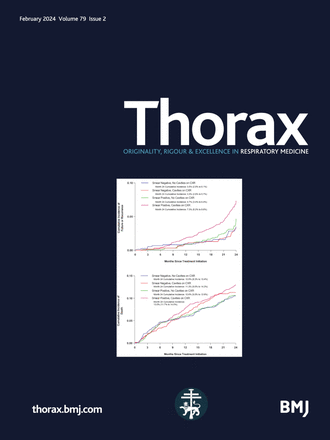先进的MicroRNA递送用于肺部炎症治疗:表面活性剂蛋白A控制细胞内化和细胞外囊泡的降解
IF 7.7
1区 医学
Q1 RESPIRATORY SYSTEM
引用次数: 0
摘要
肺泡巨噬细胞(AMs)是抵抗病原体在肺部引发炎症反应的第一道防线,对表面活性剂蛋白a (SP-A)具有很强的亲和力。细胞外囊泡(EVs)由于其最小的细胞毒性而成为一种有前途的药物传递平台。然而,精确靶向特定细胞类型和受体细胞内ev的快速溶酶体降解仍然是持续的挑战。方法探讨sp - a - ev作为抗肺部炎症的新型给药系统的生物学意义。我们首先验证了呼吸性ev表达SP-A受体(SP-R210),促进了SP-A与ev的结合。利用小鼠体内模型对其递送效率、细胞内化途径和治疗效果进行了评估。结果sp - a - ev在体外和体内均能稳定内化到AMs中。此外,我们的研究表明,sp - a - ev的摄取采用toll样受体4介导的内吞途径,与天然ev相比,sp - a - ev的降解明显延迟,天然ev主要遵循AMs内传统的溶酶体降解途径。在一项功能研究中,我们成功地将抗炎microRNA (let-7b)加载到sp - a - ev中,从而抑制AM的激活,减轻脂多糖诱导的肺部炎症。这些发现强调了SP-A- ev作为肺相关疾病靶向治疗的高效药物递送系统的潜力,利用am和SP-A之间的强亲和力以及细胞内化的调节。所有与研究相关的数据都包含在文章中或作为补充信息上传。本文章由计算机程序翻译,如有差异,请以英文原文为准。
Advanced MicroRNA delivery for lung inflammatory therapy: surfactant protein A controls cellular internalisation and degradation of extracellular vesicles
Introduction Alveolar macrophages (AMs) are the first line of defence against pathogens that initiate an inflammatory response in the lungs and exhibit a strong affinity for surfactant protein A (SP-A). Extracellular vesicles (EVs) have emerged as a promising drug delivery platform due to their minimal cytotoxicity. However, precise targeting of specific cell types and the rapid lysosomal degradation of EVs within recipient cells remain persistent challenges. Method In this study, we explored the biological significance of SP-A-EVs as novel drug delivery systems for combating lung inflammation. We first verified that respiratory EVs express SP-A receptor (SP-R210), facilitating the conjugation of SP-A with EVs. The delivery efficiency, cellular internalisation pathways and therapeutic effects were evaluated using an in vivo mouse model. Results SP-A-EVs were robustly internalised into AMs both in vitro and in vivo. Furthermore, our investigation revealed that the toll-like receptor 4-mediated endocytosis pathway was employed for the uptake of SP-A-EVs, significantly delaying their degradation compared with natural EVs, which primarily followed the conventional lysosomal degradation pathway within AMs. In a functional study, we successfully loaded anti-inflammatory microRNA ( let-7b ) into SP-A-EVs, leading to the suppression of AM activation and the alleviation of lung inflammation induced by lipopolysaccharide. Conclusion These findings underscore the potential of SP-A-EVs as highly effective drug delivery systems for targeted therapeutics in lung-related disorders, capitalising on the strong affinity between AMs and SP-A and the modulation of cellular internalisation. All data relevant to the study are included in the article or uploaded as supplementary information.
求助全文
通过发布文献求助,成功后即可免费获取论文全文。
去求助
来源期刊

Thorax
医学-呼吸系统
CiteScore
16.10
自引率
2.00%
发文量
197
审稿时长
1 months
期刊介绍:
Thorax stands as one of the premier respiratory medicine journals globally, featuring clinical and experimental research articles spanning respiratory medicine, pediatrics, immunology, pharmacology, pathology, and surgery. The journal's mission is to publish noteworthy advancements in scientific understanding that are poised to influence clinical practice significantly. This encompasses articles delving into basic and translational mechanisms applicable to clinical material, covering areas such as cell and molecular biology, genetics, epidemiology, and immunology.
 求助内容:
求助内容: 应助结果提醒方式:
应助结果提醒方式:


